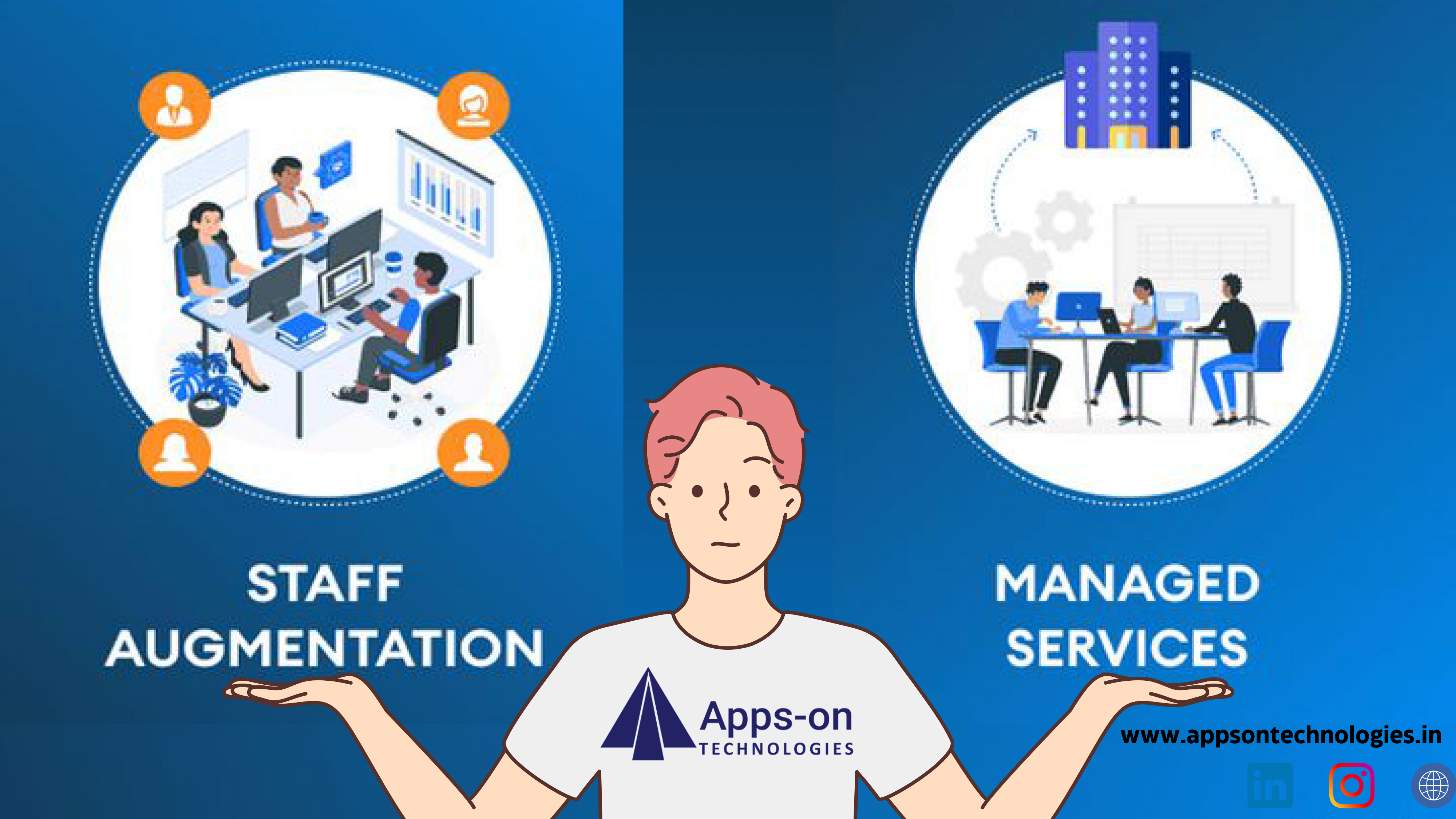Staff Augmentation vs Managed Services

by admin
Navigating the Talent Landscape: Staff Augmentation vs. Managed Services
The tech industry is a whirlwind of innovation and constant evolution. Businesses need to be agile and adaptable to stay ahead of the curve. This often translates to a need for specialized skills and expertise that may not always reside within your existing team. Here’s where the question arises: how do you bridge that skill gap and ensure your projects stay on track? This is where staff augmentation vs managed services come into play.
While both offer solutions for addressing talent gaps, they fundamentally differ in their approach. Understanding these differences is crucial for making an informed decision about which option best suits your specific needs.
Staff Augmentation: Bolster Your Team with Targeted Expertise
Think of staff augmentation as a targeted injection of specialized talent into your existing team. You essentially “augment” your workforce with skilled professionals for a specific project or duration. Staff augmentation agencies provide you with pre-vetted candidates that possess the specific skills required for your project. These individuals become integrated members of your team, working alongside your existing employees.
Advantages of Staff Augmentation
- Flexibility: Staff augmentation offers a high degree of flexibility. You can hire professionals for short-term projects, specific skill sets, or to fill temporary staffing needs. This allows you to scale your workforce up or down based on project requirements.
- Control: You retain a high degree of control over the hiring process and project management. You can define the project scope, set deadlines, and directly manage the assigned staff augmentation resources.
- Cost-Effectiveness: Staff augmentation can be a cost-effective solution, especially for short-term needs. You only pay for the skills and expertise you require for the duration of the project.
Considerations for Staff Augmentation
- Integration: Successfully integrating staff augmentation resources requires careful planning. You need to ensure they are properly onboarded and have a clear understanding of your project goals and company culture.
- Management Overhead: Managing additional staff, even for a short period, adds to your workload. You may need to invest time and resources in training and overseeing their work.
- Skillset Availability: Staff augmentation agencies may not always have readily available resources with highly specialized skillsets. Be prepared for a potential search and vetting process.
Managed Services: A Hands-Off Approach to Project Management
Managed services take a more comprehensive approach to outsourcing your talent needs. Essentially, you partner with a managed service provider (MSP) who becomes responsible for a specific IT function or project. The MSP assumes the responsibility of recruiting, managing, and overseeing the dedicated team working on your project.
Advantages of Managed Services
- Reduced Management Burden: MSPs handle all aspects of project management, including recruiting, onboarding, and performance management. This frees up your team to focus on core business activities.
- Expertise & Scalability: MSPs often possess a wider pool of talent and expertise compared to your internal team. They can scale your workforce up or down quickly to meet changing project requirements.
- Process & Governance: Managed services often come with established processes and governance structures. This ensures a structured and predictable project delivery model.
Considerations for Managed Services
- Initial Investment: Setting up a managed service agreement can involve upfront costs and contract negotiations.
- Loss of Control: You relinquish a degree of control over the project execution and team management. Communication and collaboration with the MSP are crucial for ensuring alignment with your goals.
- Vendor Lock-In: Switching between different managed service providers can be complex and disruptive. It’s essential to choose an MSP that is a good fit for your long-term needs.
Staff Augmentation vs Managed Services: Choosing the Right Fit
Ultimately, the choice between staff augmentation and managed services depends on your specific needs and project requirements. Consider these factors to make an informed decision:
- Project Duration: For short-term projects, staff augmentation may be a more cost-effective solution. For long-term needs, managed services can offer greater efficiency and scalability.
- Level of Control: If you require a higher level of control over the project and team management, staff augmentation is likely the better choice.
- Expertise Required: If you need specialized skills that may be difficult to find internally, managed services could be a better fit due to their access to wider talent pools.
Remember, there’s no one-size-fits-all solution: Carefully evaluate your project requirements, resources, and budget before deciding between staff augmentation and managed services.
Recommended Posts

The Symphony of Skills: Decoding Staff Augmentation
April 10, 2024

Demystify IT Hiring! 2024 Guide to IT Staffing Success
April 10, 2024



